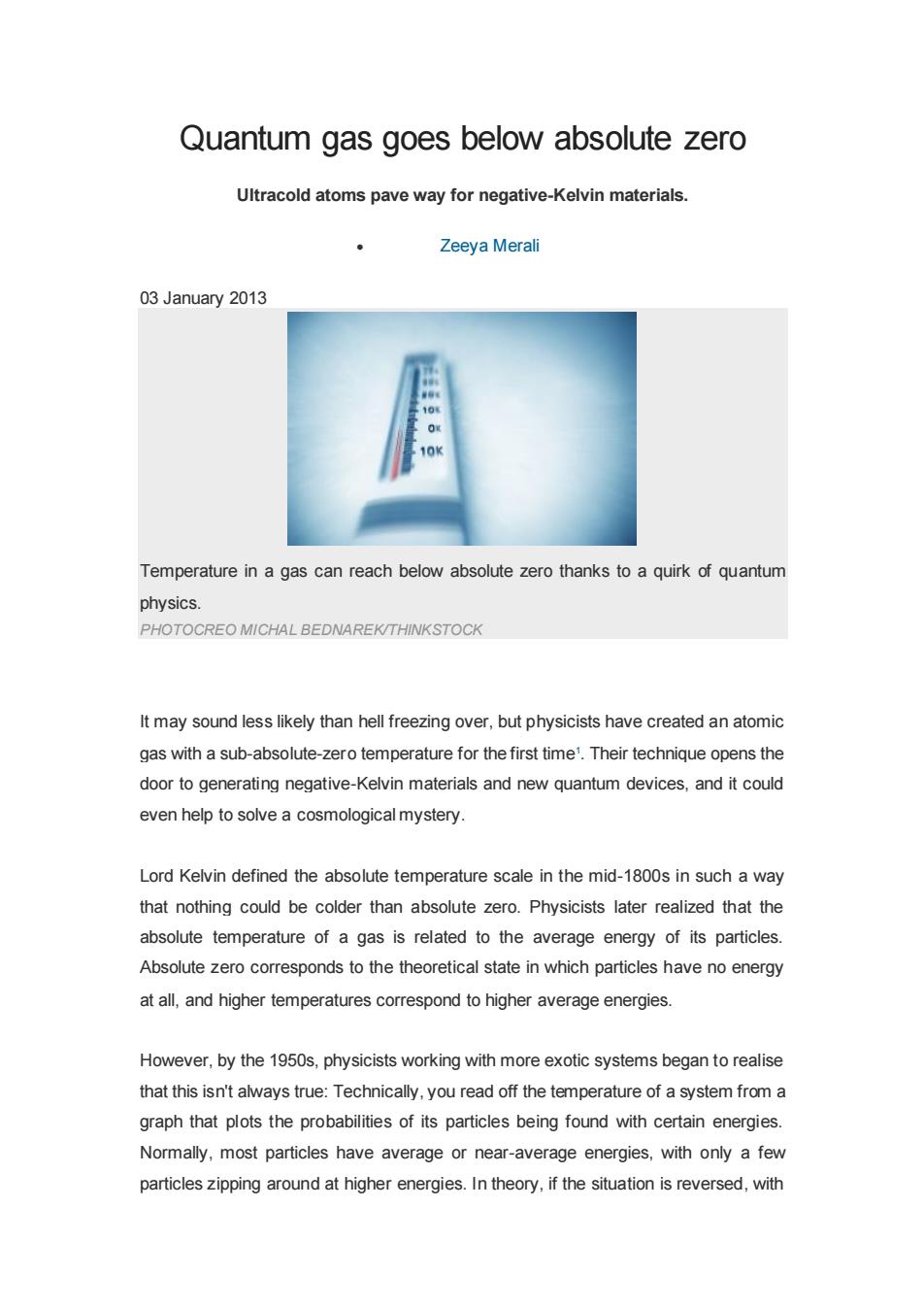正在加载图片...

Quantum gas goes below absolute zero Ultracold atoms pave way for negative-Kelvin materials Zeeya Merali 03 January 2013 Temperature in a gas can reach below absolute zero thanks to a quirk of quantum physics. PHOTOCREO MICHAL BEDNAREK/THINKSTOCK It may sound less likely than hell freezing over,but physicists have created an atomic gas with a sub-absolute-zero temperature for the first time'.Their technique opens the door to generating negative-Kelvin materials and new quantum devices,and it could even help to solve a cosmological mystery Lord Kelvin defined the absolute temperature scale in the mid-1800s in such a way that nothing could be colder than absolute zero.Physicists later realized that the absolute temperature of a gas is related to the average energy of its particles. Absolute zero corresponds to the theoretical state in which particles have no energy at all,and higher temperatures correspond to higher average energies. However,by the 190s,physicists working with more exotic systems began to realise that this isn't always true:Technically,you read off the temperature of a system from a graph that plots the probabilities of its particles being found with certain energies. Normally,most particles have average or near-average energies,with only a few particles zipping around at higher energies.In theory.if the situation is reversed.with Quantum gas goes below absolute zero Ultracold atoms pave way for negative-Kelvin materials. • Zeeya Merali 03 January 2013 Temperature in a gas can reach below absolute zero thanks to a quirk of quantum physics. PHOTOCREO MICHAL BEDNAREK/THINKSTOCK It may sound less likely than hell freezing over, but physicists have created an atomic gas with a sub-absolute-zero temperature for the first time1 . Their technique opens the door to generating negative-Kelvin materials and new quantum devices, and it could even help to solve a cosmological mystery. Lord Kelvin defined the absolute temperature scale in the mid-1800s in such a way that nothing could be colder than absolute zero. Physicists later realized that the absolute temperature of a gas is related to the average energy of its particles. Absolute zero corresponds to the theoretical state in which particles have no energy at all, and higher temperatures correspond to higher average energies. However, by the 1950s, physicists working with more exotic systems began to realise that this isn't always true: Technically, you read off the temperature of a system from a graph that plots the probabilities of its particles being found with certain energies. Normally, most particles have average or near-average energies, with only a few particles zipping around at higher energies. In theory, if the situation is reversed, with